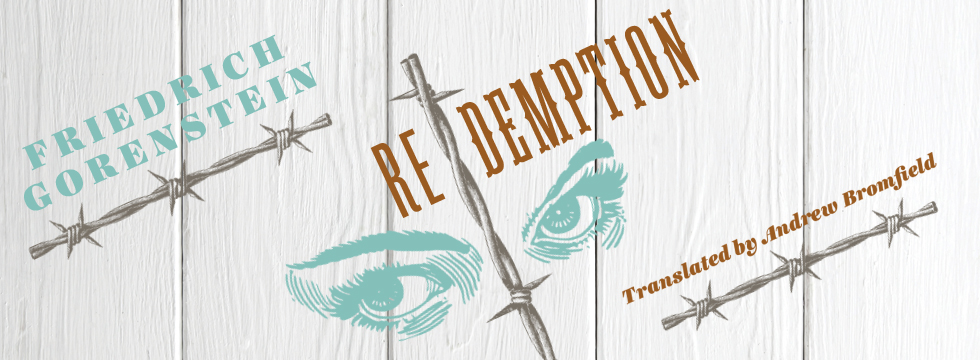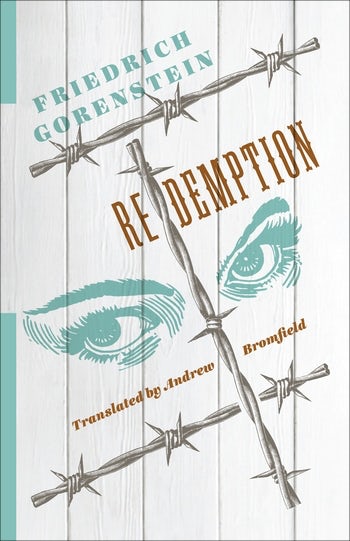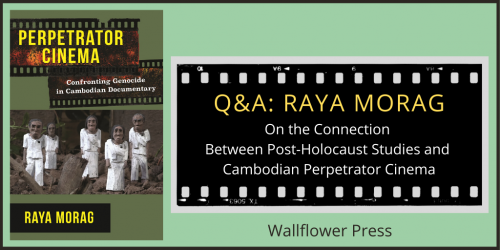Interview with Marianne Hirsch, Author of "The Generation of Postmemory"
The following is an interview with Marianne Hirsch, author of The Generation of Postmemory: Writing and Visual Culture After the Holocaust
Question: “Postmemory” – what is it? The description of your book claims that we can inherit other people’s memories, how so?
Marianne Hirsch: “Postmemory” describes the relationship that the “generation after” bears to the personal, collective, and cultural trauma of those who came before — to experiences they “remember” only by means of the stories, images, and behaviors among which they grew up. But these experiences were transmitted to them so deeply and affectively as to seem to constitute memories in their own right. As I see it, the connection to the past that I define as postmemory is mediated not by recall but by imaginative investment, projection, and creation. To grow up with overwhelming inherited memories, to be dominated by narratives that preceded one´s birth or one´s consciousness, is to risk having one´s own life stories displaced, even evacuated, by our ancestors. It is to be shaped, however indirectly, by traumatic fragments of events that still defy narrative reconstruction and exceed comprehension. These events happened in the past, but their effects continue into the present.
I first used the term “postmemory” in an article on Art Spiegelman’s Maus in the early 1990’s. Since then I’ve been trying to define and refine it, on the basis of personal experience and my reading and viewing of the work of writers and artists of what we might think of as the “postgenerations.”
Q: Why did you write this book? Are there personal stakes for you?
MH: Indeed, there was a moment, in the 1980’s, when I first began to wonder why certain stories that my parents had told me, or scenes they had evoked about what they always referred to as “the war,” were more vibrant and more vivid in my memories than moments I recalled from my own childhood. Their accounts had the textures and qualities of memories for me, but they were clearly not my memories: I had not experienced any of them directly. I felt that I needed a term to describe this indirect form of recollection, its belatedness and its multiple mediations. And I realized then that my experiences were not at all unique. Not only did I share them with other descendants of Holocaust survivors, but they described a larger cultural phenomenon common to my generation – a generation dominated by histories we did not ourselves live through. Memories are not just personal or familial. They are, as I describe in the book, more broadly affiliative – mediated by public images and stories that are transmitted to us from overpowering historical events like the Holocaust.
Q: People have criticized descendants of survivors for calling attention to themselves, rather than simply telling the story of those who have been persecuted and have suffered in the past. Is something like “trauma envy” involved in your book?
MH: The challenge for us in the next generations is precisely to acknowledge and to signal our own distance from the traumatic events that preceded us and not to appropriate them for ourselves. Of course, our own investment can be great, and trauma cannot so easily be contained, it seeps out of its bounds, connecting disparate subjectivities. Inherited trauma transmitted familially – or even culturally – can have significant effects on our lives, but it is not we who have suffered persecution or deportation. It is for this reason that I am particularly interested in tracing the workings of postmemory through a second- and now also third-generation aesthetics as manifested in literature, film, and visual arts, in the works of Art Spiegelman, Eva Hoffman, Anne Karpff, Lily Brett, Lorie Novak, Muriel Hasbun, David Levinthal, Judy Chicago, Jeffrey Wolin, among others. The multi-faceted and multi-layered aesthetic that emerges from the mediations of postmemory best communicate the contradictory needs, desires, refusals and aversions – the proximity and the distance – characterizing this experience.
Q: Your book focuses on photography as a medium of historical transmission. Why photography in particular?
MH: More than oral or written narratives, photographic images that survive massive destruction and outlive their subjects function as ghostly revenants from an irretrievably lost past world. Photographs, analog photographs, in particular are evidence of past presence. They have an indexical relationship to the object that was before the lens. But they also quickly acquire symbolic significance and thus they are more than themselves.
The Holocaust is one of the most widely photographed historical events of the twentieth century: literally millions of images survive from the period, images taken by perpetrators, bystanders and even by victims. And yet, like many events of extremity, the Holocaust is remembered by a small number of iconic images – the boy with his hands up from Warsaw, the gates of Auschwitz with the “Arbeit macht frei” sign, the image of Anne Frank’s face. My book examines how and why certain images become iconic at the expense of so many others. How that works is, I argue, a symptom of postmemory.
Q: Your book’s subtitle is “Writing and Visual Culture after the Holocaust.” After the multiplication of genocides throughout the second half of the twentieth century, and now the twenty-first, can we still consider the Holocaust as a watershed? And does “postmemory” extend to these other historical events?
MH: Clearly, at the beginning of the second decade of the twenty-first century, the Holocaust can no longer serve as the limit case in discussions of historical trauma, memory and forgetting. Indeed, the multiplication of genocides and collective catastrophes in the last decades and their cumulative effects have made the study of memory and transmission ever more urgent. The process and structure of intergenerational transmission that I understand as postmemory has become an important explanatory vehicle and object of study in numerous contexts ranging from American slavery to decolonization; the Vietnam war, the dictatorships in Latin America and Eastern Europe, the Armenian, Rwandan and Cambodian genocides, the Japanese internment camps in the US, the stolen generation in Australia, and others. These resonances and connections are important and announce new directions in the field of memory studies.
Q. Your book appears in the Gender and Culture series. What connections do you draw between postmemory and gender?
MH: I certainly do not want to go so far as to argue that memory is neatly differentiated by gender, or by other categories of social difference. But I do see the preoccupation with memory, and especially the memory of those populations who have been left out of the archives of official histories, as rooted in movements for social change such as feminism. Using feminist critical strategies to connect past and present, words and images, and memory and gender, allows me to understand different roles that gender plays to mediate which stories are remembered and which are forgotten, how stories are told, which tropes make traumatic histories bearable for the next generation. Family images and stories, and images of lost children in particular, hold great power over our imagination and I analyze how they continue to do so. Feminist approaches allow me to bring the entangled strands of disparate traumatic histories into more intimate contact.
Q: How do you see the future of memory and postmemory studies?
This book marks a point of transition for me. Scholarly work on the Holocaust has looked to this moment, when survivors and other contemporary witnesses are leaving our midst, with great trepidation. How will the story survive without their acts of witness? The second generation has acted as a gate-keeper but we now have to realize that we are ourselves handing the story on to the third, and making it available for others to connect their own very different histories. The future, as I see it, is comparative and connective, it is dominated by new media and new strategies of memorialization that are being invented in new museums and memorials. The Holocaust is one event in a global space of remembrance that looks toward a future that will know the past deeply but that will not be paralyzed by its darknesses.








